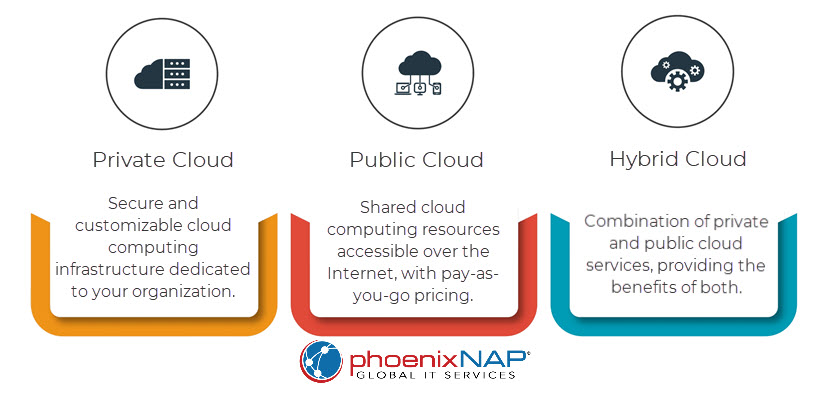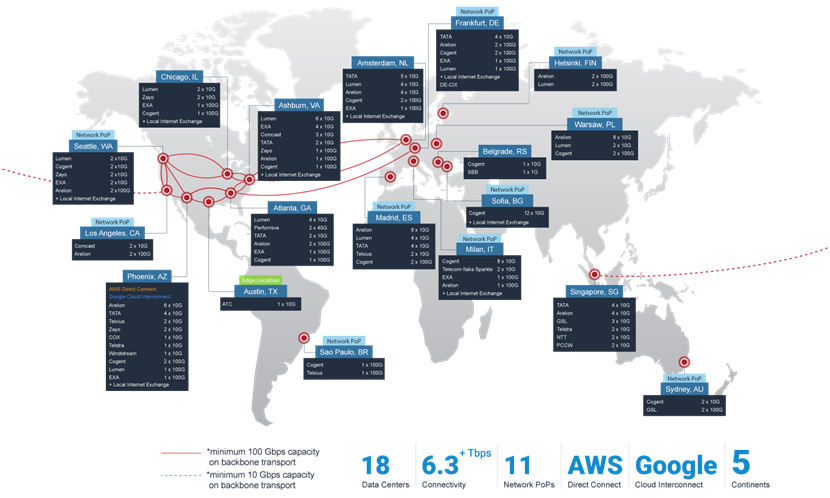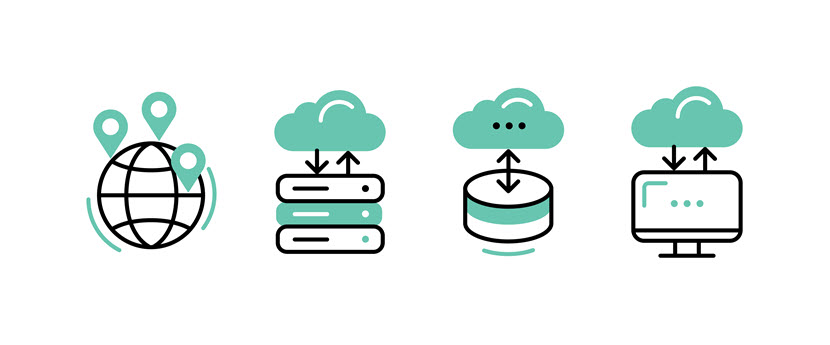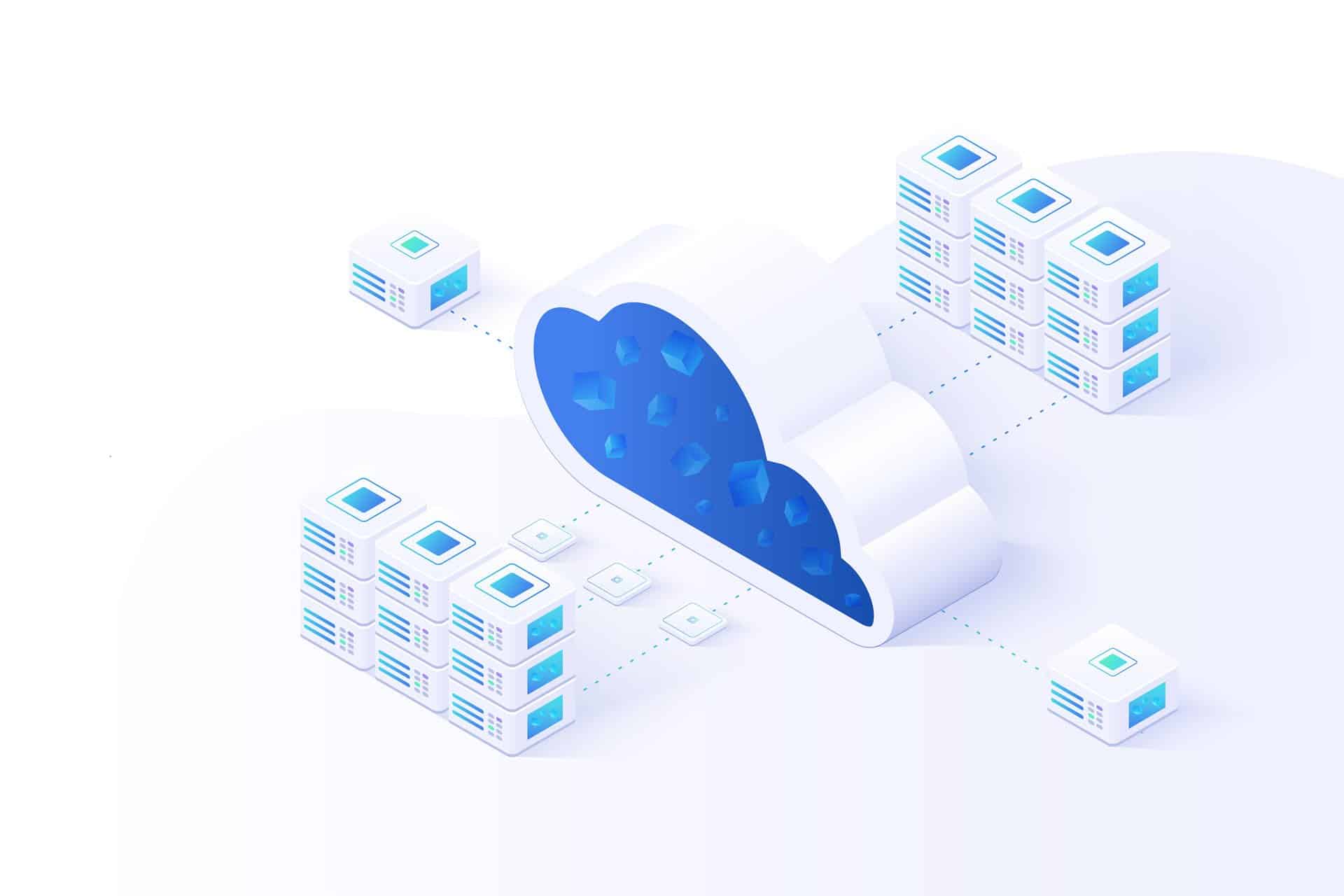Hybrid cloud technology has revolutionized IT infrastructure by combining the best of both worlds: the scalability and flexibility of the public cloud with the security and control of a private cloud environment.
A hybrid cloud lets you choose the most suitable solution for each workload. You can run mission-critical tasks on the private cloud to ensure the highest levels of security while offloading less sensitive functions to the public cloud to take advantage of its scalability and cost-effectiveness.
This article takes a deep dive into the pros and cons of hybrid cloud computing to help you determine whether it is the right fit for your organization.

Benefits of Hybrid Cloud Infrastructure
In hybrid clouds, connectivity is essential. Without it, your setup is nothing more than parallel cloud instances that lack data alignment.
There are several ways to connect cloud computing infrastructures. You could use a VPN to create a secure tunnel between the two infrastructures to transfer data. Another common approach is a dedicated interconnect – a physical connection between the two infrastructures. This method provides higher performance and reliability than a VPN but is more expensive.
Regardless of the specific configuration, when well-connected, all hybrid cloud architectures share the following common advantages:
Cost Reduction
Hybrid cloud infrastructure reduces costs by helping you avoid overprovisioning your infrastructure and enabling you to take advantage of pay-as-you-go pricing.
Example
An ecommerce store can use the hybrid cloud to scale its IT infrastructure up or down during peak demand periods, such as the holiday season. This practice of temporarily harnessing the public cloud on an as-needed basis during periods of high demand is called "cloud bursting."
Flexibility and Scalability
A private cloud offers control and performance benefits, but the physical data center limits its resource capacity. On the other hand, a public cloud provides instant, virtually limitless resource deployment but involves resource sharing with other businesses, potentially elevating security risks and causing performance inconsistencies.
While pairing these two models may seem ideal, migrating workloads from a private to a public cloud requires meticulous planning and execution.
The hybrid cloud effectively addresses this challenge by harmonizing private cloud instance types and services with those in the public cloud. This synchronization simplifies the creation, migration, and scaling of workloads and resources.
Read our article public vs. private cloud for a detailed breakdown of the differences between the fundamental cloud architecture models.
Example
A gaming company is developing a new multiplayer online game. They use a private cloud to develop and test the game. Once the game is ready to launch, the company uses a public cloud to scale its IT infrastructure to handle the expected surge in player traffic. After the launch, the company scales back its IT infrastructure to save money.
Business Continuity
Over-reliance on any one system, whether it is public or private cloud, puts you at risk, as problems can completely halt operations. With a hybrid cloud system, you retain more control.
You can also leverage a hybrid cloud to create a more robust disaster recovery and business continuity plan. For example, you can back up your data to the public cloud to continue operating even if its on-premises infrastructure is unavailable, and vice versa. Furthermore, you can deploy a hybrid cloud in multiple regions to improve performance and reliability.
Example
On a busy shopping day, there is a power outage at a company’s data center. Their private cloud is unavailable, but its public cloud environment still functions normally. The company’s IT team quickly switches the company’s applications to the public cloud. As a result, they can continue processing transactions and serving their customers.
If you prioritize digital resilience, consider our ready-made Disaster Recovery as a Service. With our vast global network of servers, we can swiftly restore your services from other locations if a local server failure or disaster occurs in one region.

Improved Security
A hybrid cloud lets you choose where to store and process data based on your security requirements.
For example, you can store sensitive data, such as customer credit card numbers, in the private cloud. Because the private cloud is under your direct and complete control, you can implement the most stringent cloud security measures to protect it.
On the other hand, public clouds are shared with other businesses, making your data more vulnerable to attack and leakage. However, for increased scalability and cost-effectiveness, you can leverage the public cloud to process the data.
Hackers can intercept data during its transmission from the private to the public cloud. To ensure data integrity, you need to use in-transit encryption.
Example
A financial services company stores customer financial data in its private cloud to comply with PCI regulations. However, they use a public cloud to process the data for fraud detection and other risk management purposes.
Before adopting a hybrid cloud workflow, organizations must get acquainted with the unique security requirements of a hybrid environment. Incorporating best security practices from the get-go ensures maximum data safety.
For more information, refer to our guide to hybrid cloud security.
Compliance
Certain laws require organizations to store and process data in specific geographic areas or under special conditions.
For example, healthcare organizations in the United States are subject to the Health Insurance Portability and Accountability Act (HIPAA), which establishes national standards for protecting the privacy and security of personal health information. HIPAA sets strict cloud storage requirements for healthcare organizations looking to store PHI in the cloud.
Another example is the European Union's General Data Protection Regulation (GDPR). Like HIPAA, this law requires companies that store the personal data of EU citizens to protect it appropriately. GDPR also indirectly establishes localization requirements by imposing stringent regulations on transferring personal data to regions that do not meet its high standards for data protection.
A hybrid cloud enables businesses to manage sensitive workloads in their private cloud while seamlessly transferring data to and from the public cloud. This flexibility is valuable as regulatory requirements evolve and data and workloads change. For example, an organization can collect personally identifiable customer data in a private cloud, perform data cleansing on-premises, and then transfer it to a public cloud application for processing or analysis, such as a large-scale big data processing project.
Example
A healthcare organization uses a hybrid cloud solution to manage its patient data. The organization's private cloud stores and processes sensitive patient data, such as medical records and billing information. The public cloud runs less critical workloads, such as website hosting and email.

Our HIPAA-ready hosting is secure by design and meets the rigorous privacy requirements of the healthcare industry. We offer unparalleled protection of sensitive health information with strong encryption, stringent access controls, and comprehensive data backup and recovery capabilities.
Standardization of IT Management Practices
Hybrid cloud solutions provide a common platform for managing both on-premises and cloud resources. This standardization can help you reduce the complexity of your IT environments, improve the efficiency of IT staff, and reduce the risk of errors.
Example
A software development company employs a hybrid cloud management platform for unified administration of its on-premises and cloud resources from a single interface. This single interface can facilitate the deployment and management of applications across all environments. By standardizing the company's application development and deployment procedures, they elevate the reliability and security of their applications.
Harness the power of hybrid cloud with phoenixNAP's hybrid cloud solutions. Contact us today to learn how we can help you achieve your business goals.

Are There Any Hybrid Cloud Disadvantages?
A hybrid cloud can be a powerful tool. However, you must carefully plan before implementing it.
It is best to start with a small deployment and gradually expand. A slow and steady approach will help you learn from your experience and not overwhelm your IT staff. If you do not have the in-house expertise to manage and secure a hybrid cloud, consider using a managed service provider.
Regardless of your needs and capabilities, here are some common challenges of hybrid cloud implementation and ways to avoid them:
Cost of Hardware
Hybrid clouds require both on-premises and cloud infrastructure, which can be expensive to purchase and maintain.
Organizations can reduce the cost of hardware by using cloud-based services for non-critical workloads. They can also use cloud-based disaster recovery solutions to reduce the need for on-premises redundancy.
Implementation Difficulty
Implementing a hybrid cloud can be challenging for organizations with limited IT expertise. Consider recruiting people with experience in hybrid systems or consult an external cloud integrator.
Furthermore, to effectively manage a hybrid setup, you need a capable team with the following skills:
- Application architecture design
- Workload processes
- Application and integration development
- Cloud monitoring
Multiple Vendors and Platforms
Efficient vendor management is critical in hybrid cloud environments where you interact with multiple offerings.
Here are some tips on managing multiple cloud vendors:
- Map your hybrid cloud strategy to critical business goals. What do you want your hybrid cloud to achieve? Once you know your goals, you can choose vendors and services to help you meet them.
- Emphasize compatibility and portability. When choosing vendors and services, consider how well they will work together in your hybrid cloud environment. Portability is essential as it will allow you to easily move workloads between different clouds and platforms.
- Use containers to improve flexibility. Containers can help you make your applications more portable and adaptable, which is especially helpful in multi-vendor and hybrid cloud environments.
- Use cloud management tools to improve visibility and control. Cloud management tools can help you manage multiple vendors and platforms from a single pane of glass – simplifying your operations and reducing costs.
- Watch out for duplicate investments. Make sure you really need multiple vendors for a particular business or technology initiative. Avoid waste by carefully evaluating your hybrid cloud architecture and the vendors that support it.
- Write portable security policies. Your IT security policy should be portable across all cloud platforms in your hybrid environment.

Explore the differences between multi-cloud and hybrid cloud in our definitive comparison article Multi Cloud vs. Hybrid Cloud.
Visibility
Hybrid cloud infrastructure is complex and involves various systems, including on-premises servers, cloud-based resources, and applications. Companies often struggle to view and control the moving parts.
Automation tools streamline tasks like system provisioning, configuration, and monitoring, improve visibility and control, and free up IT staff for more strategic work.
Furthermore, DevOps tools provide a common platform for:
- Managing hybrid infrastructures.
- Improving collaboration between IT teams and business units.
- Providing insights into system performance and security.
Hybrid Cloud: Your Path to a More Efficient, Scalable, and Secure IT Environment
Hybrid clouds have become the preferred solution for any organization with sensitive data or fluctuating computing needs, as scaling up a hybrid cloud is typically more straightforward and cost-effective than scaling up a private cloud.
Many companies transition to hybrid cloud gradually, often focusing on one application at a time. Some may initially deploy applications in the private cloud and then migrate them to the public cloud as needed.
Conversely, organizations with cloud-native infrastructure may repatriate some or all their workloads to the private cloud. In both cases, the goal is to establish a hybrid infrastructure that leverages the advantages while minimizing the downsides.



